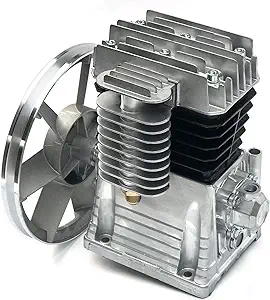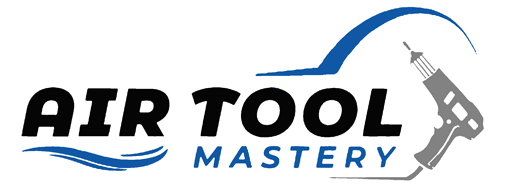Air compressor pumps, often referred to as compressors, are mechanical devices designed to increase the pressure of a gas by reducing its volume. They are essential components in various systems, such as HVAC (heating, ventilation, and air conditioning), refrigeration, and industrial processes where gas compression is required.
What is an air compressor pump?
An air compressor pump is a device that converts mechanical power into potential energy stored in pressurized air (i.e., compressed air). This is achieved by using an electric motor, diesel, or gasoline engine to forcefully draw in ambient air and reduce its volume by compressing it, which increases the air’s pressure. Once compressed, the air is stored in a tank until needed. The pressurized air can then be used for various applications, such as inflating tires, powering pneumatic tools, and industrial processes requiring compressed air for operation.
How air compressor pumps work
The functioning of air compressor pumps involves several key components and stages. Firstly, the intake valve opens, allowing ambient air to be sucked into the compression chamber. During the compression stage, this air is then compacted by a piston moving within the cylinder, which significantly reduces its volume and increases its pressure. Once the air reaches a predetermined pressure level, the compressor’s discharge valve opens, and the pressurized air is pushed into a storage tank. Here, the air remains under pressure until it is required for use.
To regulate the pressure, air compressors are often equipped with a pressure switch that automatically stops the motor when the air in the tank reaches the high-pressure limit and restarts it when the pressure drops to the preset low limit. This cycle ensures a constant supply of compressed air while preventing over-pressurization.
Types of compressor pumps
- Piston Compressors: These are the most traditional and widely used type of compressors. They use pistons driven by a crankshaft to compress the air. Piston compressors can be either single-stage, for lower pressure requirements, or double-stage, for higher pressure applications.
- Rotary Screw Compressors: These compressors use two meshing helical screws, known as rotors, to compress the air. They are known for their efficiency and are typically used in industrial applications requiring a continuous supply of compressed air.
- Rotary Vane Compressors: Similar to rotary screw compressors, rotary vane compressors have a rotor with longitudinal slots that house the vanes. The centrifugal force from the rotor’s rotation causes the vanes to slide out and compress the air against the cylinder’s outer wall. These are often used for smaller, less demanding tasks.
- Centrifugal Compressors: Also known as dynamic compressors, these operate on a different principle, using high-speed rotating impellers to impart velocity to the air, which is then converted into pressure.
Understanding a heat pump compressor

A heat pump compressor plays a crucial role in the operation of a heat pump system. It works by circulating refrigerant throughout the system, which in turn absorbs and releases heat as it moves between the indoor and outdoor units. This process allows for efficient temperature regulation within a space, regardless of the external weather conditions.
Heat pump compressors come in various types, each tailored to specific system requirements and operational efficiency. Some of the most common include:
- Scroll Compressors: These are known for their reliability and efficiency, using two spiral-shaped scrolls to compress the refrigerant. One scroll remains stationary, while the other orbits around it, reducing the volume and increasing the pressure of the refrigerant.
- Rotary Compressors: This type utilizes a cylindrical rotor with slots that hold vanes. These vanes slide in and out as the rotor turns, trapping and compressing the refrigerant against the chamber walls.
- Reciprocating Compressors: Similar to piston compressors in air compression systems, these use pistons driven by a crankshaft to compress the refrigerant. They are well-suited for high-pressure differences and are commonly found in residential heat pumps.
Harbor Freight air compressor pumps
Harbor Freight air compressor pumps are an affordable solution for both DIY enthusiasts and professionals looking for reliable air compression. These pumps are designed to offer durability and efficiency, with models available that can meet a wide range of needs – from small, portable units for light tasks to more powerful models suitable for industrial applications. Harbor Freight pumps are known for their ease of use and maintenance, making them accessible even to those not professionally trained in pneumatic systems. With a focus on providing cost-effective tools without compromising on quality, Harbor Freight air compressor pumps are an excellent choice for a variety of air compression needs, ensuring that projects can be completed efficiently and effectively.
Air compressor motor and pump
The air compressor motor and pump are crucial components in the operation of an air compressor system. The motor serves as the powerhouse, converting electrical energy into mechanical energy to drive the pump. This pump then utilizes this mechanical energy to compress air, increasing the air’s pressure. Motors can vary in size, power, and type, including electric, gasoline, or diesel options, allowing for use in different environments and applications.
Similarly, pumps come in various designs, each with its unique advantages, tailored to specific tasks, from light-duty household applications to heavy-duty industrial use. Selecting the right combination of air compressor motor and pump is essential for achieving optimal performance and efficiency, making it vital for users to understand their specific requirements when choosing an air compressor system.
Replacement air compressor pump
When considering the replacement of an air compressor pump, it’s critical to assess both the current and future needs of your operations. The right replacement pump can significantly enhance the performance of your air compressor, reducing energy consumption and improving overall efficiency. There are several factors to consider, including the pump’s CFM (cubic feet per minute) rating, which determines the volume of air the pump can deliver at a given pressure. Matching this rating with your air tools’ requirements is crucial for optimal performance.
Additionally, the type of pump—whether it’s a single-stage or a two-stage pump—will affect the maximum pressure and efficiency of your system. Single-stage pumps are typically sufficient for most home and lighter commercial applications, while two-stage pumps, which compress the air in two phases, are better suited for high-demand, industrial environments.
2-Stage Air Compressor Pumps
2-Stage air compressor pumps offer a significant advantage in terms of efficiency and performance for demanding industrial applications. By compressing the air in two stages, these pumps are capable of achieving higher pressures with less energy consumption compared to single-stage pumps. This two-step process involves compressing air to an intermediate pressure, cooling it, and then compressing it again to the final pressure. This method not only increases the efficiency but also results in a cooler, more manageable air output which can be critical in continuous or high-demand situations.
Key benefits of 2-stage air compressor pumps include their ability to provide a consistent supply of compressed air at higher pressures, making them ideal for tools and processes that require a substantial amount of power. Additionally, the improved efficiency can lead to lower operating costs over the lifespan of the compressor, despite the initial higher investment compared to single-stage compressor pumps.
Conclusion
In the modern world, the importance of pump compressors cannot be overstated. They are the unsung heroes in various industries, vital for everything from refrigeration in supermarkets to operating vital equipment in hospitals. As the backbone of many operations, reliable and efficient compressors ensure a seamless flow of production and services that people often take for granted.
Advances in technology promise even greater compressor efficiency, reliability, and environmental friendliness. Innovations such as variable speed technology, oil-free models, and improved heat recovery systems are setting new benchmarks in performance and energy conservation. Looking ahead, integration with the Internet of Things (IoT) and predictive maintenance using artificial intelligence (AI) hold the potential to revolutionize compressor management, minimize downtime, and further reduce operational costs.

